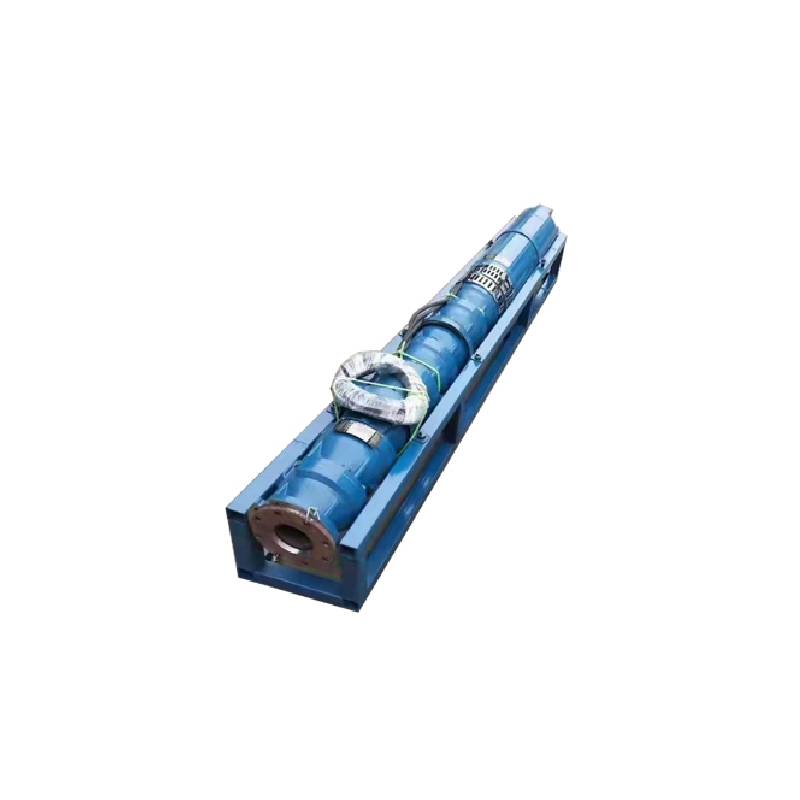Oct . 18, 2024 02:08 Back to list
Understanding the Function and Benefits of Submersible Pumps in Various Applications
Understanding Submersible Pumps Function and Applications
A submersible pump is a type of pump that is designed to be submerged in fluid, functioning efficiently underwater to transport liquids from one location to another. This powerful device is widely employed in various industries due to its unique design and capabilities. In this article, we will explore the definition, working principles, applications, and advantages of submersible pumps.
Definition and Working Principle
Submersible pumps are encapsulated motors that are submerged in the fluid being pumped. The construction typically consists of a hermetically sealed motor and a pump body, which are connected via a shaft. The motor drives the pump impeller, generating suction that allows the pump to draw fluid into the intake and subsequently expel it through the discharge outlet.
One of the key features of a submersible pump is its ability to function in high-pressure environments. Since the pump is submerged, it does not need to create a vacuum to draw the fluid up, which makes it more energy-efficient compared to other types of pumps that work above the fluid level. The entire unit is designed to operate underwater, allowing for various applications from deep well pumping to dewatering operations.
Applications of Submersible Pumps
Submersible pumps find extensive use across multiple sectors. Below are some common applications
1. Water Supply These pumps are often used to extract groundwater from wells for residential and agricultural water supply. They can efficiently lift water from great depths, making them ideal for rural areas.
2. Dewatering In construction sites or areas prone to flooding, submersible pumps are utilized to remove excess water. They can pump out water quickly, maintaining a dry workspace and preventing damage to structures.
3. Sewage and Wastewater Management Submersible sewage pumps are specifically designed to handle waste and sewage. They can efficiently transport raw sewage to treatment facilities, ensuring sanitary conditions.
what is submersible pump

5. Aquaculture and Fish Farming In aquaculture, submersible pumps are used to circulate water in fish tanks and ponds, ensuring optimal oxygen levels and overall health for aquatic life.
Advantages of Submersible Pumps
Submersible pumps offer several advantages that make them preferable in various scenarios. Some of these benefits include
- Efficiency Since these pumps work underwater, they do not require priming and can move fluids efficiently with minimal energy consumption.
- Space-Saving Design Submersible pumps have a compact design, making them suitable for applications where space is limited.
- Reduced Noise Being submerged in water, these pumps operate more quietly than surface pumps, which can be beneficial in noise-sensitive environments.
- Durability Typically built with corrosion-resistant materials, submersible pumps can withstand harsh environments, including abrasive fluids and extreme temperatures.
- Versatility They can handle various fluids, including clean water, sewage water, and sludge, making them applicable in diverse industries.
Conclusion
In summary, submersible pumps play a vital role in modern fluid management across various sectors. Their efficiency, durability, and capability to operate in challenging environments make them an essential tool for many applications. Understanding their functionality and benefits can help industries select the right pumping solution for their needs, ensuring effective fluid transfer while maximizing efficiency. Whether you are dealing with water supply, sewage treatment, or industrial processes, submersible pumps deliver reliable performance and significant advantages.
-
Submersible Water Pump: The Efficient 'Power Pioneer' of the Underwater World
NewsJul.01,2025
-
Submersible Pond Pump: The Hidden Guardian of Water Landscape Ecology
NewsJul.01,2025
-
Stainless Well Pump: A Reliable and Durable Pumping Main Force
NewsJul.01,2025
-
Stainless Steel Submersible Pump: An Efficient and Versatile Tool for Underwater Operations
NewsJul.01,2025
-
Deep Well Submersible Pump: An Efficient 'Sucker' of Groundwater Sources
NewsJul.01,2025
-
Deep Water Well Pump: An Efficient 'Sucker' of Groundwater Sources
NewsJul.01,2025
-
 Submersible Water Pump: The Efficient 'Power Pioneer' of the Underwater WorldIn the field of hydraulic equipment, the Submersible Water Pump has become the core equipment for underwater operations and water resource transportation due to its unique design and excellent performance.Detail
Submersible Water Pump: The Efficient 'Power Pioneer' of the Underwater WorldIn the field of hydraulic equipment, the Submersible Water Pump has become the core equipment for underwater operations and water resource transportation due to its unique design and excellent performance.Detail -
 Submersible Pond Pump: The Hidden Guardian of Water Landscape EcologyIn courtyard landscapes, ecological ponds, and even small-scale water conservancy projects, there is a silent yet indispensable equipment - the Submersible Pond Pump.Detail
Submersible Pond Pump: The Hidden Guardian of Water Landscape EcologyIn courtyard landscapes, ecological ponds, and even small-scale water conservancy projects, there is a silent yet indispensable equipment - the Submersible Pond Pump.Detail -
 Stainless Well Pump: A Reliable and Durable Pumping Main ForceIn the field of water resource transportation, Stainless Well Pump has become the core equipment for various pumping scenarios with its excellent performance and reliable quality.Detail
Stainless Well Pump: A Reliable and Durable Pumping Main ForceIn the field of water resource transportation, Stainless Well Pump has become the core equipment for various pumping scenarios with its excellent performance and reliable quality.Detail
